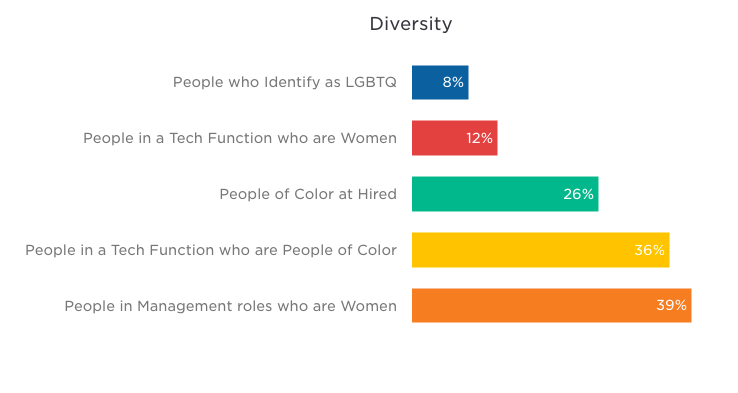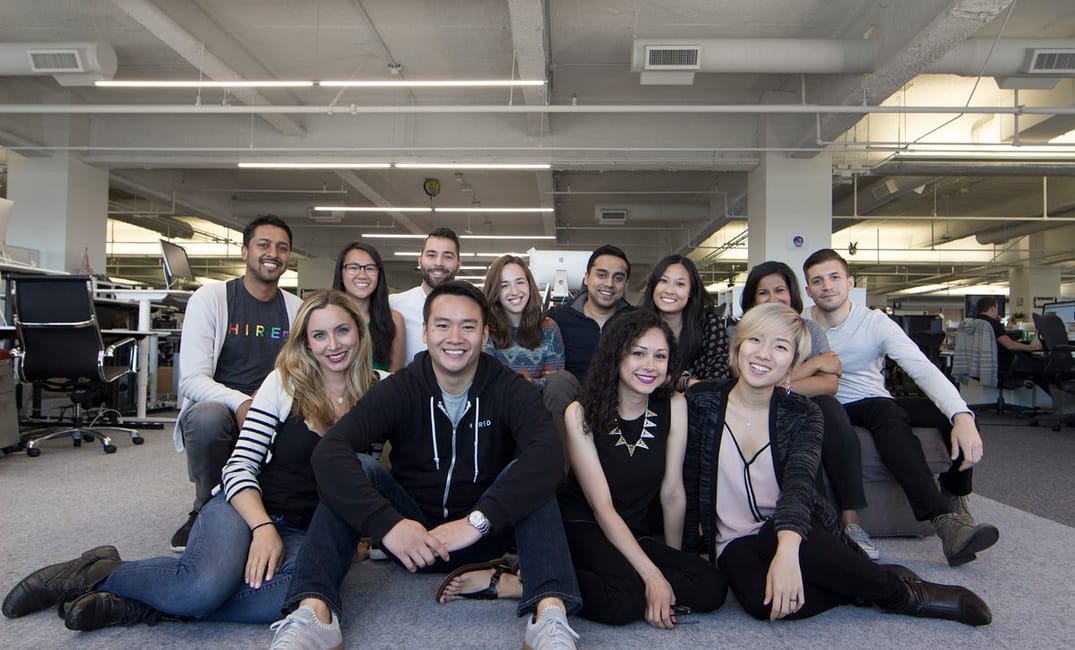
Sponsored by Hired
George Packer wrote in the New Yorker, “The hottest tech startups are solving all the problems of being twenty years old, with cash on hand, because that’s who thinks them up.” Tech touts its desire to “change the world,” but it won’t be able to unless it adopts a more diverse workforce. Companies like Facebook publicly acknowledge their efforts in closing the gap, but recent reports still indicate huge disparities that only grow larger as you move up the chain of power. Seventy-three percent of senior leadership positions are still male and 71% white.
We spoke to one tech company that’s been working hard to close the gap when it comes to building a diverse company. Kelli Dragovich, a senior vice president at Hired who has worked for over 15 years in talent management and human resources, recently spearheaded the Diversity, Equity and Inclusion Initiative at her company. We talked to her about diversity initiatives and asked what the future holds for job applicants who don’t fit the “white and male” mould.
Nicole: I’m a young woman of color at the start of my career. What’s the best thing I can do to improve my prospects?
Kelli: This issue is becoming less about channels and more about finding the right mentors in positions of influence. There are a lot of great resources and organizations that enable you to meet people in positions like yours, but five high-power individuals can provide more power than hundreds on the periphery. We need to figure out a way to get women into these positions of power in a meaningful way that grows diversity from the inside.
So start with people who have gone through the system you’re about to enter, and ask them how they were successful. Use them to connect you to the leaders in your space.

Nicole: Even if I’ve found good mentors, what if I’m afraid the company I’m about to enter isn’t inclusive or supportive of diversity?
Kelli: Just ask questions during your interview! It’s completely appropriate to ask, “Do you have any specific philosophies and initiatives around creating a diverse work environment?” Frame it as a genuine point of curiosity rather than passing judgment.
It’s also completely appropriate, in later interviews, to ask companies about their compensation philosophies (though it shouldn’t be foremost in your conversation). At any given moment, there are a number of factors that create wage gaps. Understanding the methodology behind compensation is most important. You’ll be able to substantiate whether gaps arise from biases like race and gender and, therefore, be able to act on them. You’ll also know when the wage gap is valid — for example, when you’re being paid less because you have less experience.
Nicole: I agree that pay gaps arise for a number of reasons, but the male-female wage gap is the most daunting to me. Do you think there’s anything companies can do to fix this?
Kelli: Well, people have different expectations and backgrounds, but you can’t just focus on individuals, because that doesn’t scale. The most important thing is to invest time and expertise into making a difference from the very beginning. Invest in a foundation that prioritizes diversity and builds a system around ensuring that it is enforced. Make sure everyone understands why certain salary gaps exist. We’re one of the first companies that is publishing our own wage-gap numbers!
Invest in a foundation that prioritizes diversity and builds a system around ensuring that it is enforced.
We also make sure our employees don’t undersell themselves. We placed a data scientist who asked for a salary that was 30K below what she was worth. A lot of companies would’ve said, “Great, we can get this person at a bargain.” At Hired, she had a talent advocate who gave her advice during every step of the process. She got to look at our data — it’s all open source on our platform — and see what competing offers look like. This helped her close the expectation gap.
Nicole: It’s great to hear that Hired cares so much, but it still doesn’t seem like that’s the general trend. It’s becoming difficult to continually attend “networking” events and see so few women and people of color in the room. Do you think there’s hope of this landscape changing anytime soon?
Kelli: Bay Area companies are actually making more aggressive moves toward being inclusive. Given the open nature of our data and the publicity of this issue, I don’t think companies will have the ability to systematically perpetuate these inequalities much longer. People are demanding diversity and equality — and companies have to respond to this.

Nicole: Is there anything I can do personally? And is there any parting advice you have for navigating this system?
Kelli: Don’t be afraid to ask for help! If you can’t drive change, talk to someone who can. If a company is ever pressuring you to accept an offer, know that you don’t have to rush. Make sure you’re comfortable, and find an advocate. Hired is a great example. But whatever the case may be, you don’t have to do it alone.







